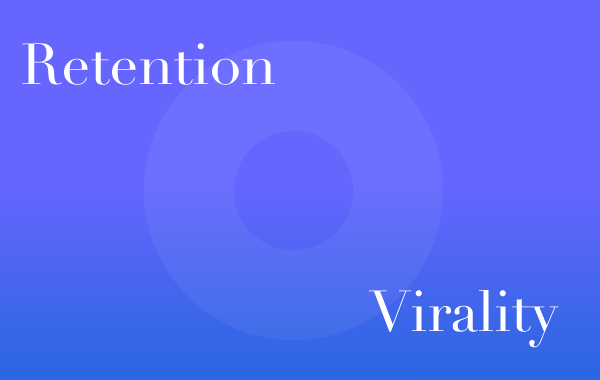This sounds straightforward, but completely oversimplifies the problem:
Make sure your product is retaining your users, THEN work on growth. Don’t work on growth until your product is working.
This sounds right, but it’s too blunt of a rule.
For fundamentally social products, it’s hard to separate retention/engagement and virality. Turns out that for fundamentally social products, retention causes virality, and vice versa too.
Engagement to virality
Engagement causes virality because of a simple idea: New users won’t create a viral factor >1 in their first visit. Not even close. So in order to generate any meaningful amount of virality, you generally need multiple visits and multiple opportunities to take them through a viral flow that generates more friends. As a result, it turns out to get growth, you need people to stick around so that they can keep inviting and keep sharing.
Virality to engagement
Growth causes engagement because you need to activate people and keep them engaged. A meaningful amount of retention for any social product comes notifications. It could be from people following you, commenting on your content, or otherwise. If you don’t have a steady dribble of notifications coming into your inbox every day, then you won’t have the opportunity to bring people back into the product. A large % of these notifications will be caused by new users coming into your product, and the small # of actions they do on their first day. So you want them around, and it’ll keep your engaged users happy.
Chicken and egg
So if you have a chicken and egg problem, what’s the right way to solve this?
Well, you don’t need scalable viral growth to get enough users onboarding and generating notifications. You just need a little trickle of growth, and that might be from ads, blogging, PR or something else. You also want to make sure your social product has a low threshold for the minimum social graph required to keep it working- you can either do that if the product would work with just your friends and family, or if you’re going after a densely connected vertical.
All set?
If you have a trickle of new users and there’s enough people in the product to be interesting, then you’re all set. Then you can turn your attention to engagement and retention. Keep the users you get, have them generate more users, and you’re quickly on a good path.
